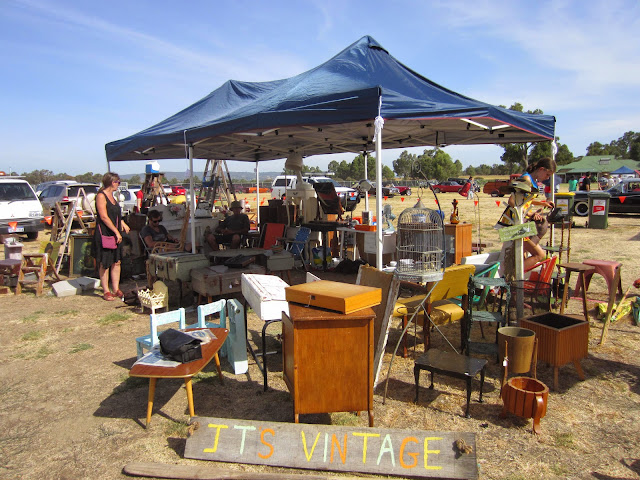
The Fahrzeugmuseum in Chemnitz, the home town of Auto-Union, is currently hosting an exhibition of early IFA cars. Amongst the cars on display is one very rare and special car – the only IFA F9 two seater roadster ever built.
The Auto Union Group (Audi, DKW, Horch and Wanderer) found itself on the wrong side of the border after Germany was divided into East and West at the end of the Second World War. While a company was re-founded in the West at Ingolstadt, their factories in the East were nationalised by the communist government and renamed IFA. IFA inherited DKW's plans, tools and designs, and in 1949 they were able to put into production their version of DKW's 1939 F9.


This very early IFA brochure for the F9 features marketing photographs of the original DKW F9 taken in September 1939. IFA's F9 was so similar in outward appearance to the DKW original few would have noticed.

East Germany may have been communist, but the people at IFA still wanted to build nice cars, so IFA decided to spruce up the F9 sedan and offer a two-seat roadster version. A single coach-built prototype was built and exhibited at the Leipzig Motor Show in 1950. The car was sleek and handsome and clearly targeted the export market in the west.

The prototype roadster in its heyday. The car originally had a silver finish. This photo was most likely taken when it was privately owned.
However, at almost exactly the same time DKW in West Germany had just released their version of the F9, named the F89. DKW did not have access to the car's original three-cylinder 900cc engine so the DKW version had to make do with the older, two-cylinder 700cc engine. Included in the range was a lovely two-seater Karmann bodied roadster.

The DKW Luxus Zweisitzer, or luxury two-seater, was bodied by Karmann Karosserie, who would later gain fame with the Volkswagen Karmann Ghia. These exclusive, hand-built cars came in coupe and cabriolet form. They were only offered between 1950 and 1955 and are extremely rare and sought after these days.

From IFA's perspective the release of the DKW F89 was unwelcome news. The car was basically the same car as the IFA F9 but even though the IFA car had a better engine, DKW had an established service network in the west that IFA simply could compete with. At that time IFA was already producing a coach-built roadster in the IFA F8 Luxus and didn't have the capacity to produce a second model so IFA decided to drop the F9 roadster idea. No more were built and the single prototype was sold to IFA works driver, Harald Linke in 1951, who drove it as his family car until 1957. After he sold the car it disappeared from sight and was rumored to have been scrapped.

Harald Linke behind the wheel of the prototype at a race meet in Hohenstein-Ernstthal.
Jump forward sixty old years and DKW enthusiast named Peter Lott from Stendal heard a rumor that there was a two-seater F9 somewhere in Berlin. From that slender lead he began an extensive search that finally paid off when he tracked down the car, parked under a lean-to in a garden in Koepeinek, East Berlin. The car was badly rusted and as the car had been exposed to the weather for decades, the interior was completely rotted out. It had also been altered substantially over the years.

Lott assessed the car as probably beyond economical repair and passed the lead on to DKW enthusiast and historian, Frieder Bach, who purchased the car. In December 2014 the car was part of a special display at the Fahrzeugmuseum, dedicated the F9 'people's car.' The roadster was displayed 'as found' under a replica of the lean-to. When the exhibition closed in March, the car was returned to Bach for restoration. I would expect this would take quite a few years.

Harald Linke is reunited with the car in the museum exhibition.

The interior is completely gutted and the floor rotted out in places.

When completely restored it will look like this replica roadster.

Starting with baby steps. DKW body restorer, Winfried Kuhl, replicated the dashboard from molds and measurements taken from the original DKW F9 prototype. http://dkw-karosseriebau.de/
For more information about the display and the museum, visit their website - http://www.fahrzeugmuseum-chemnitz.de/ and http://www.chemnitzer-geschichtsverein.de/CGV/Veranstaltungen.htm and https://www.zwischengas.com/de/news/F9-Sonderausstellung-im-Fahrzeugmuseum-Chemnitz.html and http://www.rt-forum.de/t1094f35-Saechsisches-Fahrzeugmuseum-Chemnitz.html and http://www.kulturgut-mobilitaet.de/forum/6-plauderecke/23346-vorstellung-der-forumsmitglieder-mit-ihren-autos?start=320







































